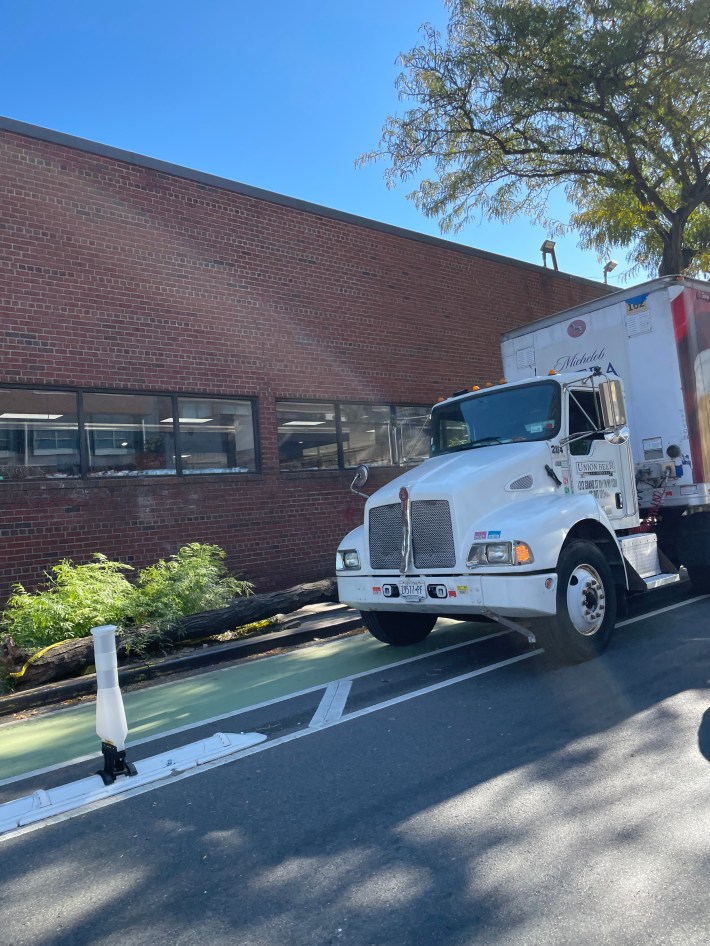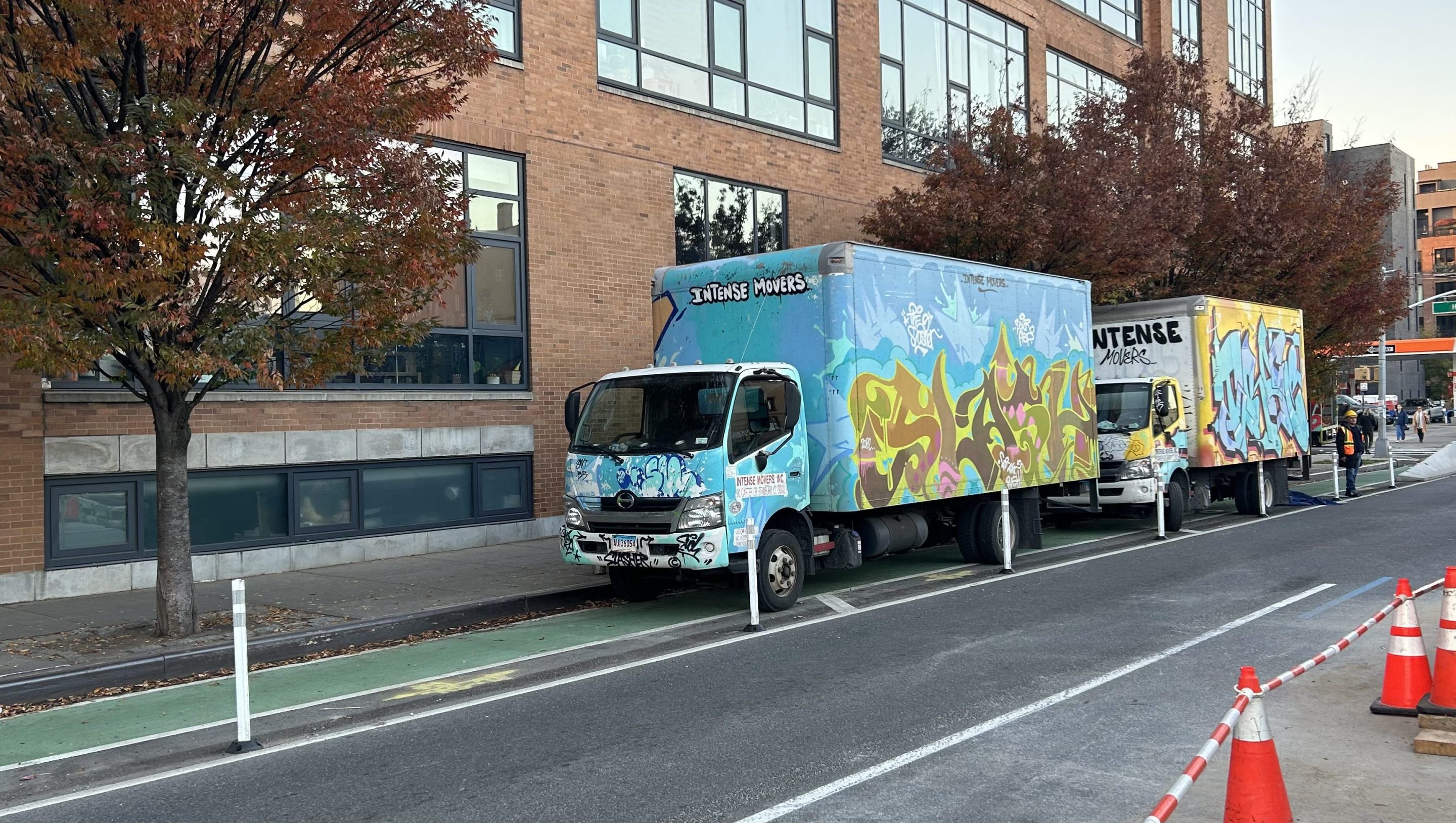The Adams administration’s watered down bike lane redesign of McGuinness Boulevard completely failed to improve pedestrian safety on the corridor, the area's elected representatives said in a letter Tuesday in which they urged city officials to implement the Department of Transportation's original plan.
Recently-painted curbside bike lanes on the section of McGuinness north of Calyer Street experience “near constant” illegal car and truck parking — while parking spots meant to separate cars from cyclists and pedestrians sit empty, leaving them unprotected, the pols said.
"Nothing has been done to improve conditions for pedestrians; if anything, crossing in the section north of Calyer Street has become more challenging. Overnight parking in the flex lane, necessary for implementing the 'road diet' during hours when speeding is most common, has been entirely non-existent," the electeds wrote.
“It is abundantly clear to us why DOT’s original road diet proposal is far superior and must be implemented along the entire corridor in the spring.”
The letter [PDF] was addressed to DOT Commissioner Ydanis Rodriguez, and signed by U.S. Rep. Nydia Velázquez, Assembly Member Emily Gallagher, state Sen. Kristen Gonzalez, Borough President Antonio Reynoso, and Council Member Lincoln Restler.
The pols' preferred design — DOT's proposal from May — would have narrowed the entire stretch of McGuinness Boulevard from two lanes in each direction to one, with a parking protected bike lane along the curb. But Mayor Adams threw a wrench in those plans over the summer when he ordered DOT officials to scale back the project in response to pushback by the influential local film production company (and his political donors) Broadway Stages.
Hizzoner approved a compromise version of the plan that included bike lanes, but left two extra car lanes in each direction from 7 a.m. to 7 p.m. between Calyer Street and the Pulaski Bridge.
Cars are supposed to fill the spots at other times to provide protection for cyclists, but have been "entirely non-existent," the pols wrote. Many cars simply park in the green bike lanes instead, according to locals.
DOT's original road diet was supposed to still go ahead south of Calyer to Meeker Avenue, but Adams's City Hall lackeys intervened again and ordered an “analysis” of the southern segment, which has yet to be installed.
In their letter, the local politicians demanded Commissioner Rodriguez give a “clear answer about what DOT is studying to inform Spring implementation.”

DOT's original plan included several features meant to reduce speeding and shorten crossing distances that fell by the wayside when Adams intervened.
While the compromise road diet removed all legal daytime parking — the original road diet maintained a lane of parking and even carved out commercial loading zones for local businesses. That plan also created shortened crossing distances for pedestrians, with just one motor vehicle lane on each side and pedestrian islands in the parking lane at intersections. Instead, under the redesign in place so far, people crossing the street must traverse two car lanes and two bike lanes, noted one local advocate with the group Make McGuinness Safe.
“In essence, it’s a longer crossing distance,” said Bronwyn Breitner. “It is a completely dysfunctional street design.”
The design effectively undermines the central goal of the McGuinness redesign to make the thoroughfare safer for pedestrians, prompted by the 2021 hit-and-run killing of beloved local teacher Matthew Jensen.
Breitner said locals fear that Mayor Adams — who has repeatedly stalled or ditched street redesigns around the city following backlash by special interests — will cave further and implement the flawed, ineffectual compromise design all along McGuinness Boulevard down to Meeker Avenue.
“What we’re anticipating with this mayor is that it’s very likely they’re going to come back in the spring and say ‘We’re going to continue... all the way down the boulevard,’” Breitner said.
The group opposed to the redesign, Keep McGuinness Moving, urged DOT to disregard the "opinions" of the neighborhood's duly elected representatives.
"McGuinness Blvd must be a safe thoroughfare and is wrong for a bike lane - and the recently implemented bike lane and that opposition letter only prove us right," said the organization's founder, Averianna Eisenbach, in a statement.
Work on the project will continue into 2024, a DOT spokesman said.
"The safety project is still ongoing as we wrap up the work scheduled for this season. As previously announced, the project will carry into next year," said the spokesman, Scott Gastel.






